
INFECTION by the bacterium Borrelia burgdorferi, which causes Lyme disease, is becoming more recognisable and more common in regions in which types of ticks (Ixodes spp.), which carry the bacterium, are endemic.
Lyme disease is referred to as a vector-borne disease, because the spread of the bacteria relies on the tick (the vector) to transmit the disease to various host animals when it feeds. It is thought to be the most common disease spread by ticks in the northern hemisphere and commonly occurs in the spring and early summer.
Within the UK, research in horses has observed high levels of seropositivity (presence of the antibodies that combat the disease) in East Anglia and on the south coast, but low seropositivity in Newmarket, Yorkshire, Scotland and Ireland.
Similar trends have been seen in human medicine and in dogs. Not all horses with antibodies develop signs, and those clinical signs that are evident are often described by owners as vague and mysterious.
THE TICK’S LIFE CYCLE
IT is important to understand the tick’s life cycle in order to take measures to reduce the risk of your horse contracting the disease.
Ticks need to have a new host at each stage of their life.
In spring, female ticks detach from hosts and lay thousands of eggs in warm spots on the ground. With the arrival of summer, the eggs hatch and produce six-legged larvae. The larvae may be infected with B. burgdorferi but more commonly, ticks become infectious once they have absorbed the pathogen from one of their hosts.
This story is from the {{IssueName}} edition of {{MagazineName}}.
Start your 7-day Magzter GOLD free trial to access thousands of curated premium stories, and 9,000+ magazines and newspapers.
Already a subscriber ? Sign In
This story is from the {{IssueName}} edition of {{MagazineName}}.
Start your 7-day Magzter GOLD free trial to access thousands of curated premium stories, and 9,000+ magazines and newspapers.
Already a subscriber? Sign In

'Sorry, but I wasn't feeling it'
Fresh from the opening meet, Tessa Waugh hasn't quite yet been bitten by the hunting bug. Without the crisp autumnal air and cheek-pinching cold she hoped for, it's a sluggish start
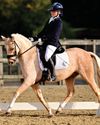
New pair pull off a win
A former European Championships pony is on form with his new rider, while elsewhere former showjumpers and eventers take ribbons

Lording it over the rest
Horses who have returned from injury, a second generation homebred and a long format specialist score on the final weekend of the British season
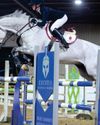
Smith hits flying form
A \"her way or no way\" mare helps Zoe Smith to an impressive ribbon haul and a rider beats his own boss to the top spot

Jankorado hits the jackpot
Paul Sims is triumphant despite his interrupted jump-off preparation and a borrowed horse comes up trumps
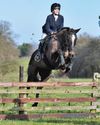
Peanut
From \"dangerous, scary\" to hedge-hopping brilliance, hunting has been the making of this unstable but very lovable equine character

She's a corker
Communication, says long-standing and highly respected Belvoir master Lady Sarah McCorquodale, is the key to all, as Catherine Austen discovers
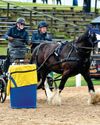
Access all areas Cavalier Centre
The Cavalier Centre is a fully accessible, state-of-the-art equestrian centre designed to improve lives through horse-based activities. Ellie May Forrester pays a visit
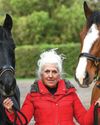
'Use it or lose it'
Not everyone wants to reach for the pipe and slippers at a certain age. Becky Murray speaks to some veteran horse-and-rider combos for their secrets of human and equine longevity
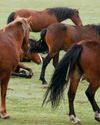
A new way forward
Worm control in horses is vital, but established methods will not remain effective for much longer. Tim Mair FRCVS explains why and how we need to change